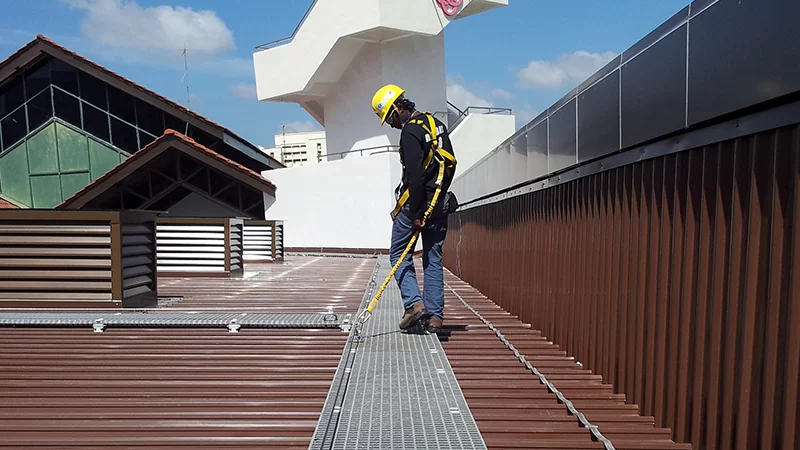Working on rooftops can be hazardous without proper safety measures in place. In the Philippines, where the weather can be unpredictable and rooftop environments vary widely, installing anti-slip roof walkway systems is crucial to ensure safety, stability, and efficiency for workers. These systems not only prevent accidents but also protect the roof structure itself, making them a vital investment for any building with regular rooftop access.
Understanding the Need for Anti-Slip Roof Walkways
Rooftops often present challenging work environments due to their sloped surfaces and exposure to weather elements. Without a designated walkway, workers may face slip hazards, potentially leading to accidents and injuries. Anti-slip roof walkway systems provide a safe, stable, and level surface for workers to navigate, reducing the risk of slips and falls. They also help in preserving the integrity of the roof by preventing unnecessary damage from foot traffic.
Key Features of Aluminum Walkway Systems
Aluminum walkway systems are favored for their durability and resistance to corrosion, making them ideal for various rooftop environments. The lightweight nature of aluminum allows for easy installation over new or existing structures without the need for welding. Additionally, the aluminum 6063 mill finishing ensures not only functionality but also an aesthetically pleasing appearance. These systems offer flexibility with anchoring options through non-penetration fixing systems and can be customized with guardrails for enhanced safety.
Exploring Fiberglass Walkway Systems
In corrosive environments such as petrochemical industries or marine vessels, fiberglass walkway systems shine due to their non-corrosive properties. Despite being lighter than aluminum, fiberglass is incredibly strong and offers fire retardant qualities, making it a preferred choice where safety and durability are paramount. Available in high-visibility yellow or grey, fiberglass walkways ensure clear delineation of pathways and can easily accommodate handrails on one or both sides as needed.
Applications of Anti-Slip Walkway Solutions
These walkway solutions find application across various industries in the Philippines. From industrial plants and warehouses to commercial buildings and educational institutions, anti-slip roof walkway systems are essential for ensuring compliance with safety regulations and enhancing worker productivity. Case studies illustrate successful installations that have significantly improved rooftop safety and operational efficiency.
Considerations for Choosing the Right Walkway System
When selecting between aluminum and fiberglass walkway systems, several factors come into play. Budget considerations, installation requirements, and specific environmental conditions should all be weighed carefully. Both systems offer distinct advantages, and choosing the right one depends on the unique needs of the facility and the level of protection required for workers and the roof structure itself.
Installation and Maintenance Tips
Installing anti-slip roof walkway systems involves careful planning and adherence to safety guidelines. A step-by-step guide ensures proper installation, while regular maintenance routines help extend the lifespan and effectiveness of the walkway. Routine inspections and prompt repairs are essential to keeping the system in optimal condition and ensuring ongoing safety for rooftop workers.
Takeaway
Investing in anti-slip roof walkway solutions in the Philippines is not just about compliance with safety standards—it’s about safeguarding the well-being of workers and protecting the longevity of rooftop structures. By choosing the right walkway system and implementing proper installation and maintenance practices, businesses and organizations can create safer working environments and enhance overall operational efficiency.

